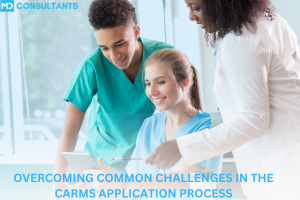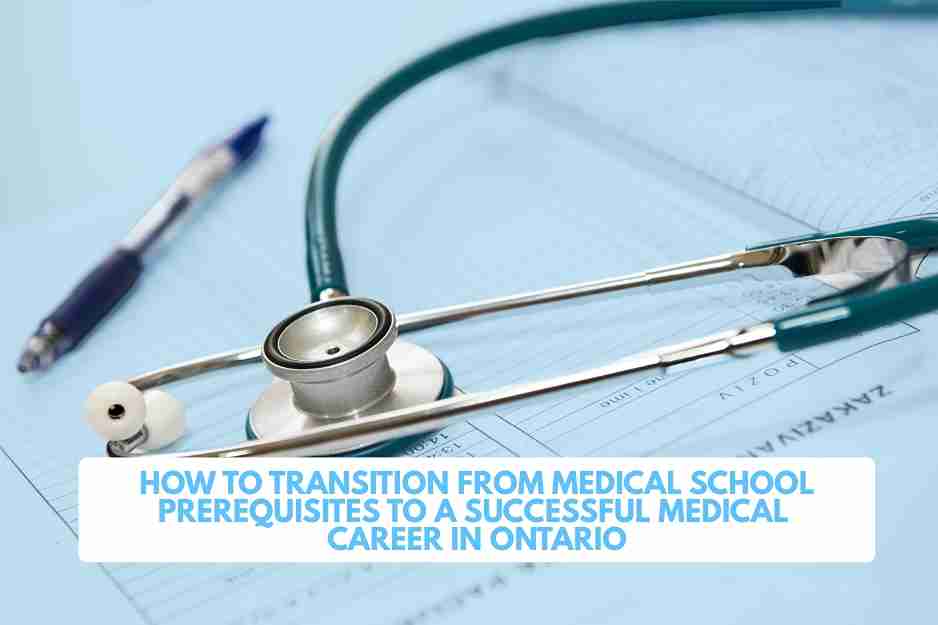The previous blog on becoming a doctor showed how extensive the journey can be for a career in medicine. From this section onwards, we will get into the nitty gritty about getting into medical school.
However, before we get into details, you must first learn some basic lingo or terminology used in the medical school admissions process. Once you understand these, you will have an easier time reading medical school websites or having discussions with other applicants.
- GPA
- MCAT
- Prerequisite courses
- Extra-curricular activities
- Volunteer work
- Research
- OMSAS
- Reference letters
- In-province vs. Out-of-province
- Interview
- Accepted/Waitlisted/Rejected
Grade Point Average (GPA)
Your GPA is an average of your credit course grades converted to a standardized score, usually out of 4.0. Your undergraduate university usually provides your GPA after each school year, as well as an overall GPA for all of your courses. Medical schools also require your GPA, but they will use their own formulas to calculate them based on your course grades.
Medical College Admissions Test (MCAT)
The MCAT is a standardized exam used by many North American medical schools as part of the admissions process. The exam covers several topics, including physics, chemistry, biology, organic chemistry, physiology, reading comprehension, and social sciences.
Prerequisite courses
Some medical schools do not have any course requirements. However, many medical schools do have a few specific types of university courses you must complete to be eligible for their program – these are called prerequisite courses. Most of these course requirements are reasonable to achieve, and often there is overlap between requirements by different schools.
For example, the University of Toronto’s medical school requires 1 course of the Humanities/Social Sciences/Languages and 2 courses of the Life Sciences. Queen’s University requires 1 Biological Sciences, 1 Physical Sciences, and 1 Humanities/Social Sciences courses. On the other hand, McMaster University’s medical school has no prerequisite courses.
It’s important that you speak with an academic counsellor at your university to identify which of your courses will satisfy those requirements. In addition, keep in mind that you can take your prerequisite courses as late as the year you are applying to the medical school.
Extra-Curricular Activities (ECs)
Extra curricular activities are basically any type of activity you have do or have done with regular commitment outside of your educational curriculum. Common types of ECs include school clubs, social justice groups, music groups, sports teams, visual arts, and so on.
Volunteer Work
While volunteer work could technically fall under the category of ECs, they are generally viewed separately. Volunteer work usually involves activities done for the purpose of serving others at no cost, such as volunteering with hospitals, charities, etc.
Research
When premeds talk about research, they are referring to the non-curriculum activity of working with a scientist supervisor and his/her team to uncover new knowledge or apply current knowledge to produce something new. For premeds, such scientist supervisors are usually university professors or physician researchers working at a teaching hospital or university. Although ECs, volunteer work and research are not explicitly required by medical schools, they play a significant role in supporting an applicant as a well-rounded individual with many skills beyond academics.
Ontario Medical School Application Service (OMSAS)
OMSAS is the online, centralized application service for applying to Ontario medical schools. Other medical schools in Canada must be applied to directly.
Reference letters
Reference letters are written by individuals of authority who have worked with the applicant in a supervisory role and can comment on their academic and non-academic qualities. The individual writing the letter is known as a “referee”. The referee is commonly an academic supervisor (professor, research supervisor, etc.) or a supervisor in an EC (e.g. sports coach), volunteer work (e.g. charity coordinator) or employment (e.g. employer/boss). Medical schools usually require 3 letters of reference.
In-province vs. Out-of-province
In-province (IP) and out-of-province (OOP) are terms that refer to an applicant’s status when applying to a particular medical school. IP status is usually granted to students who have previously lived in the medical school’s province or who attended the medical school’s university previously. OOP status refers to students applying to a medical school which exists in a province for which they did not live in previously or attend that medical school’s university.
The reason IP/OOP status is important is because some medical schools have specific quotas or application requirements that depend on the student’s IP/OOP status. Usually, IP applicants are advantaged, either with lower application requirements and/or more class spots available. It is important that you check each medical school’s website carefully to determine whether you meet IP status and the application advantages that come with it.
Application cycle
Medical school applications are processed once a year, since a new medical school class is formed every year. Application cycle refers to the process that occurs once a year for one full attempt at applying to medical school. Of course, you can apply to as many medical schools you like at once, as long as you meet their eligibility criteria. It is not uncommon to see applicants who apply to anywhere between 1 and over 10 medical schools in Canada.
One application cycle usually involves the submission of an application (GPA, MCAT, essays, letters of reference) in the fall, followed by interviews in the spring of the following year, and ending with results (accepted/waitlisted/rejected) provided in late spring/early summer. We have a great article on with tips for applying to medical school that could be beneficial to your application process.
Interview
Applicants with the top written applications (usually the top 15%-20%) move on to the interview stage. Those who do not receive an interview are considered “rejected pre-interview” and will hopefully receive interviews from other medical schools, or will have to re-apply next year. Keep in mind that because different medical schools look for different things in applicants, it is not uncommon for students to be offered interviews from some medical schools but not others. The interviews are usually held in “traditional” or “multiple mini interview” format. This is the last component of the admissions process before medical schools rank the applicants and send out admission offers.
Accepted/Waitlisted/Rejected
After medical schools make their decisions on interviewed applicants, there are 3 potential outcomes:
1.) Accepted – the medical school accepts you and you can start your education there in the coming fall. If more than one medical school accepts you, then you can choose which one to attend. Usually medical school offers in Canada occur around the same time.
2.) Waitlisted – applicants who are waitlisted at a medical school have not been accepted, but could potentially be accepted within the next few months depending on how many of the medical school’s initial offers are accepted. This is because it is not uncommon for applicants to be accepted at more than one medical school, and thus once their choice is known, the medical school whose offer was not accepted can offer the now empty spot to the next person on the waitlist.
For example, imagine a medical school that has 100 class spots, with the next top 50 applicants on a waitlist (i.e. 101 to 150 on the ranking list). On the first day, the medical school sends out offers to the top 100 applicants they ranked. After the first week, 90 have accepted and 10 rejected their offers to attend other medical school. Then the medical school can send their offers to the students on the waitlist ranked 101 to 110.
3.) Rejected – applicants who are interviewed but ended up being ranked among the lower group of applicants and are unlikely to get off a waitlist may be “rejected post-interview”.


